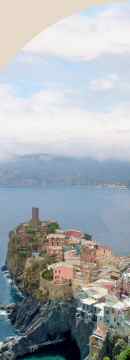Cinque Terre (Italian for "Five Lands") consists of five isolated, traditional Italian towns along the Mediterranean Sea, connected by a well-kept hiking path. It is now a national park. With no museums or "tourist traps" anywhere, this was our “vacation from our vacation”. We began this mini-vacation by enjoying a quick al fresco group lunch and fortifying ourselves with gelato.
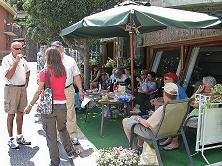
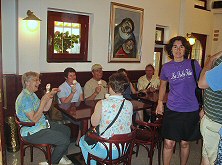
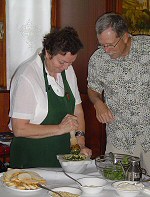 On our first evening there, the Hotel Pasquale's restaurant
became a private club open only to our group. The food doesn't get better or more Italian
than this. The owner even shared the restaurant's recipes for Lasagne al Forno and Semifreddo
with us, and gave us a private lesson in how to make pesto from local olive oil, freshly picked basil leaves, and pine nuts. It was delicious.
On our first evening there, the Hotel Pasquale's restaurant
became a private club open only to our group. The food doesn't get better or more Italian
than this. The owner even shared the restaurant's recipes for Lasagne al Forno and Semifreddo
with us, and gave us a private lesson in how to make pesto from local olive oil, freshly picked basil leaves, and pine nuts. It was delicious.
Well-fed and rested, it was time to experience the Cinque Terre. You can hike between the five towns via the well-maintained old paths that linked the early villages, or you can take either a train or a boat, or any combination to explore these delightful villages.
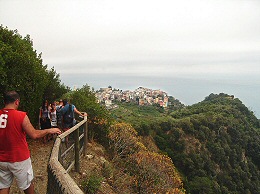
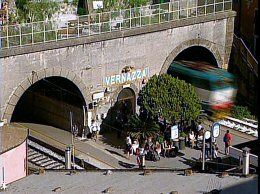
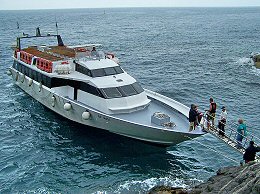
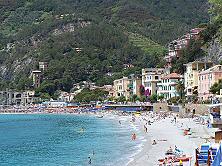
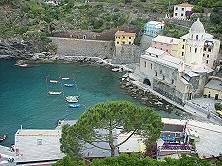 There is also the option of just lazing around the beach and swimming in the sparkling water. The sea is vividly colored and so clear that it
looks like stained glass... Although several of us took a dip in the Med
at this Italian Riviera, we all spent most of our time visiting the
different towns.
There is also the option of just lazing around the beach and swimming in the sparkling water. The sea is vividly colored and so clear that it
looks like stained glass... Although several of us took a dip in the Med
at this Italian Riviera, we all spent most of our time visiting the
different towns.
The five lands are physically fairly close yet still isolated enough to have their own individual characteristics. Monterosso, Vernazza, Corniglia, Manarola, and Riomaggiore.
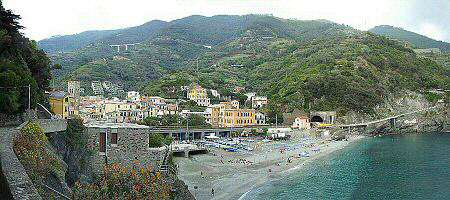 Monterosso
Monterosso
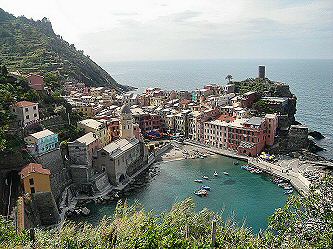 Vernazza
Vernazza
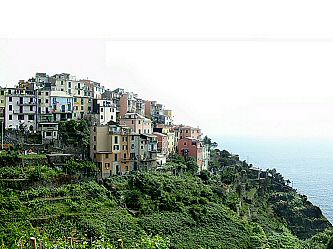 Corniglia
Corniglia
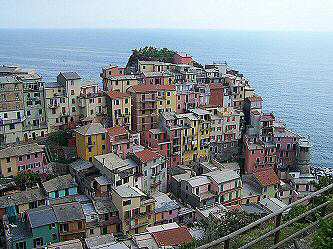 Manarola
Manarola
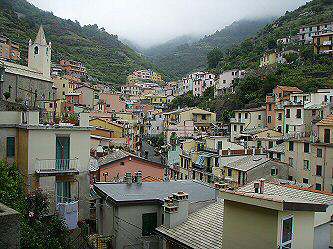 Riomaggiore
Riomaggiore
Their relative inaccessibility kept these villages in sort of a time warp, allowing them to retain much of their centuries-old character, even with the inevitable modernizations. People still live closer to the Earth here, some continuing to make their living from fishing the sea or working the mountainous soil. The Cinque Terre region is definitely hilly. The land is so steep that it has been deeply terraced to support the vineyards and olive orchards. A monorail tram transports people, supplies, and produce to and from the vineyards and orchards on one mountainside.
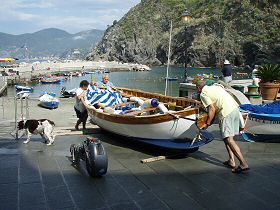 Family Boat
Family Boat
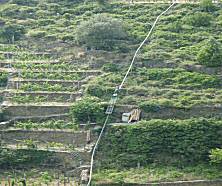 Monorail snaking up the mountain
Monorail snaking up the mountain
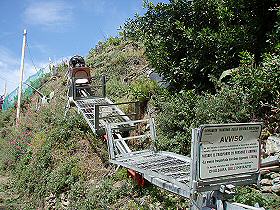 Tram
Tram
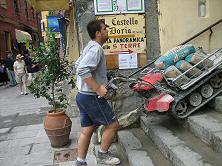 Many town lanes
are very steep and narrow, and some places are accessible only by steps, making it
impossible for vehicles to reach many areas. Much of
the material goods are still transported with strong arms and on broad shoulders. (Glen:
we chanced to witness a courier, carrying a box of produce, take a tumble on rain-slicked steps when he
got too interested in watching Elizabeth pass the other way; fortunately,
neither he nor his produce was seriously injured and he had a broad smile on his
face as he recovered himself.) The motorized, tracked "wheel barrow"
shown at left is one local innovation that helps blend modern lives with "ancient"
architecture in Cinque Terre.
Many town lanes
are very steep and narrow, and some places are accessible only by steps, making it
impossible for vehicles to reach many areas. Much of
the material goods are still transported with strong arms and on broad shoulders. (Glen:
we chanced to witness a courier, carrying a box of produce, take a tumble on rain-slicked steps when he
got too interested in watching Elizabeth pass the other way; fortunately,
neither he nor his produce was seriously injured and he had a broad smile on his
face as he recovered himself.) The motorized, tracked "wheel barrow"
shown at left is one local innovation that helps blend modern lives with "ancient"
architecture in Cinque Terre.
Everywhere you looked, there was a photograph waiting to be taken… Everyone says that photographs of the Grand Canyon look like they are faked (but that's just the way the canyon looks) and photographs of Cinque Terran landscapes often are like that, too. They just don't quite seem possible, not quite real somehow. But the views in Cinque Terre also make you want to take up painting. With amazing scenery like this, it wouldn't matter what your skill level was, nor whether you tried oils, pastels, or water color. You couldn't go wrong.
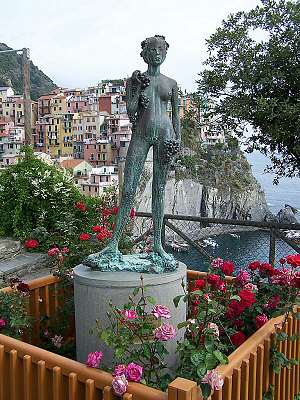
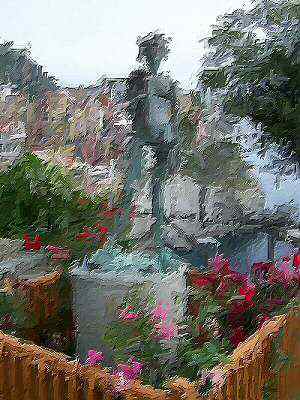
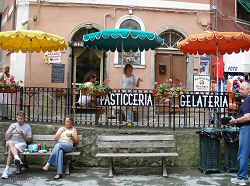
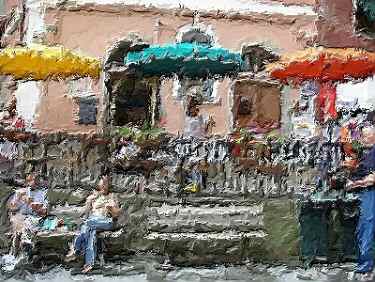
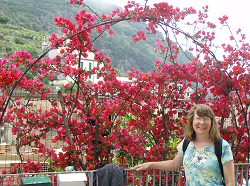
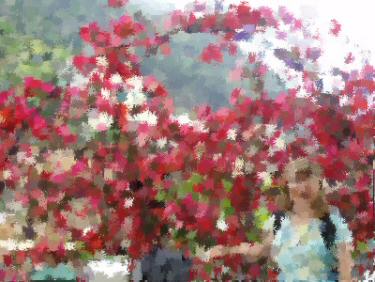
Click below to watch Cinque Terre Part 1/3 (1:58) |
Click below to watch Cinque Terre Part 2/3 (Riomaggiore and Manarola) (3:58) |
|
Click below to watch Cinque Terre Part 3/3 (Corniglia, Vernazza, and Monterosso) (4:00)

